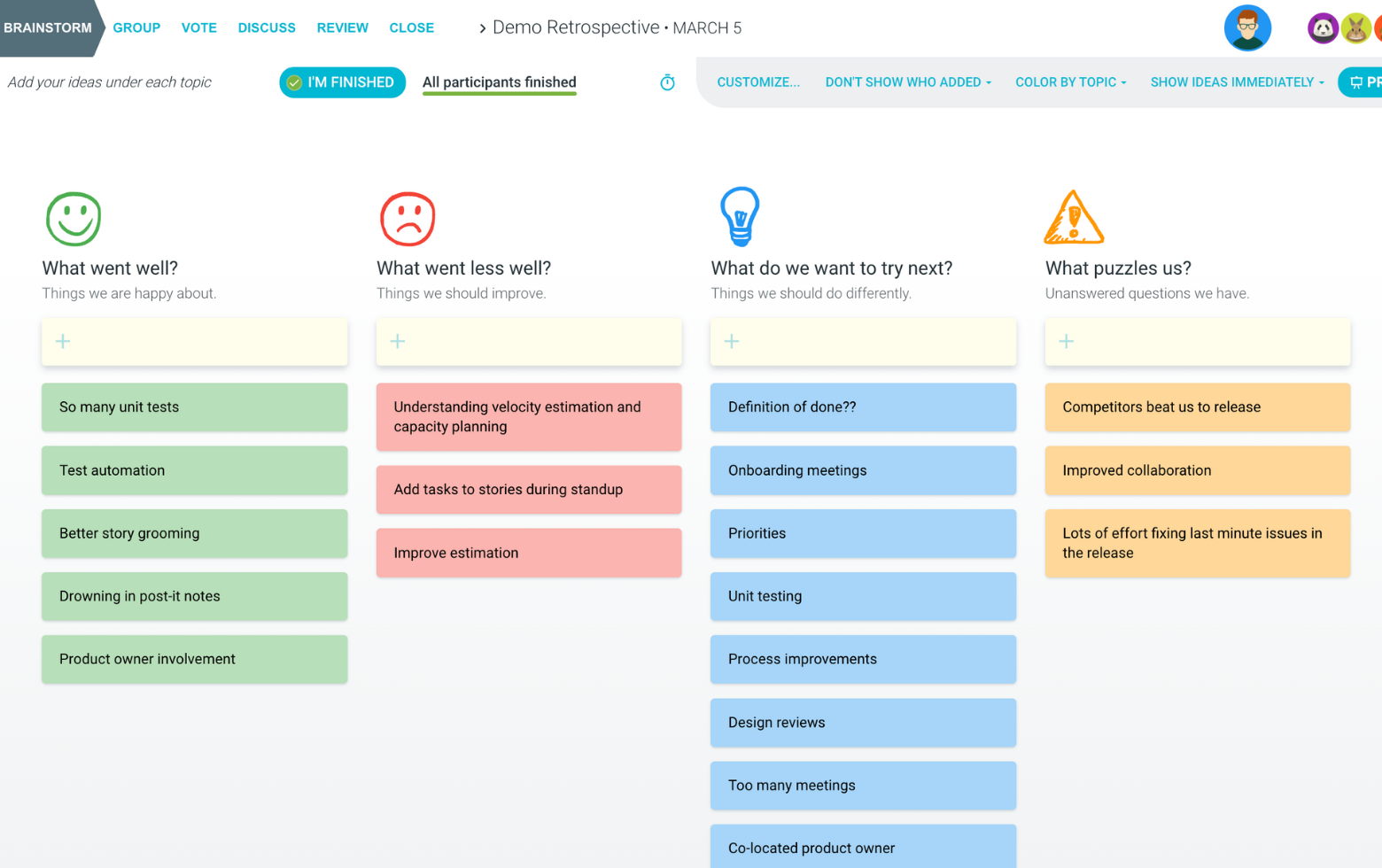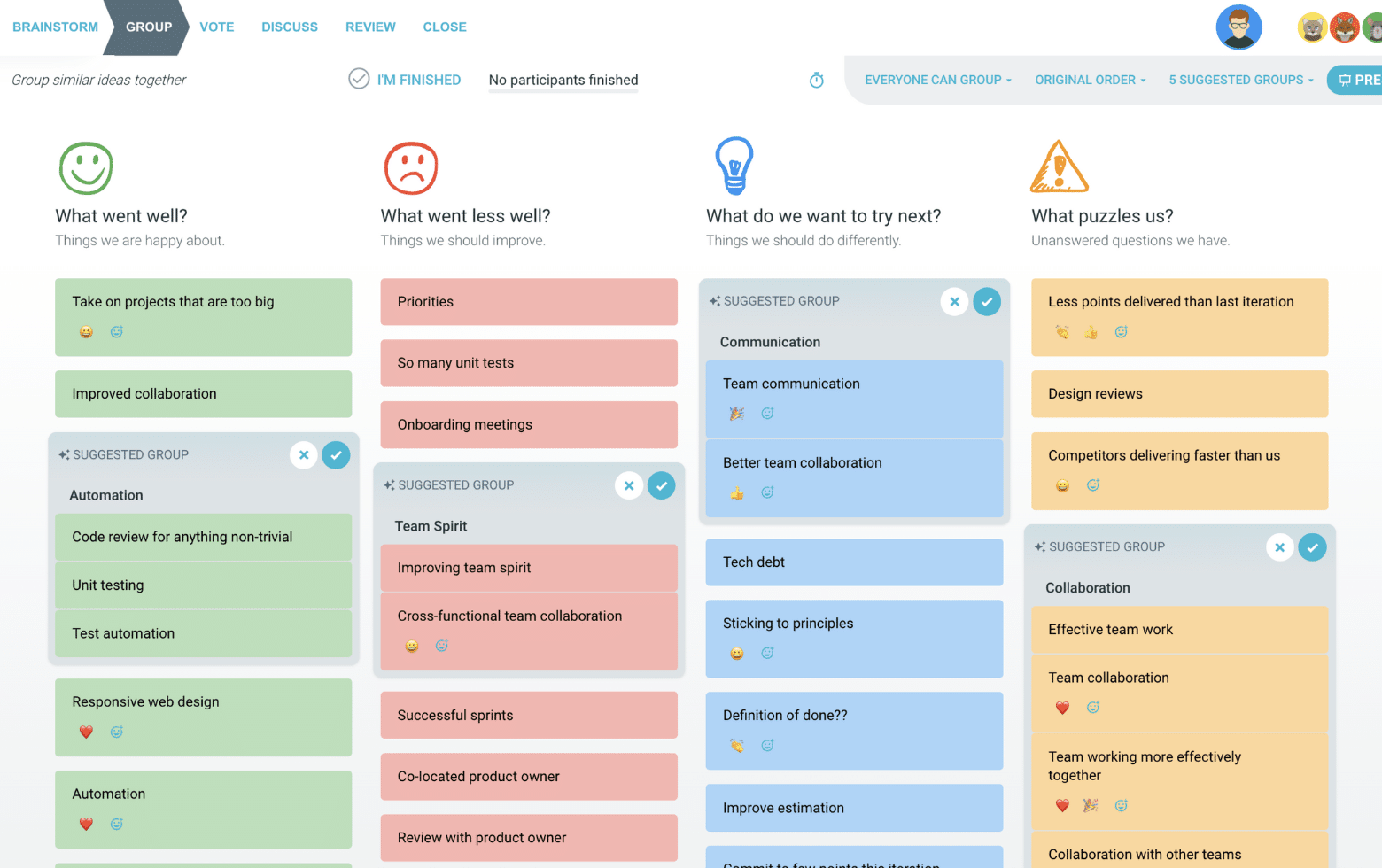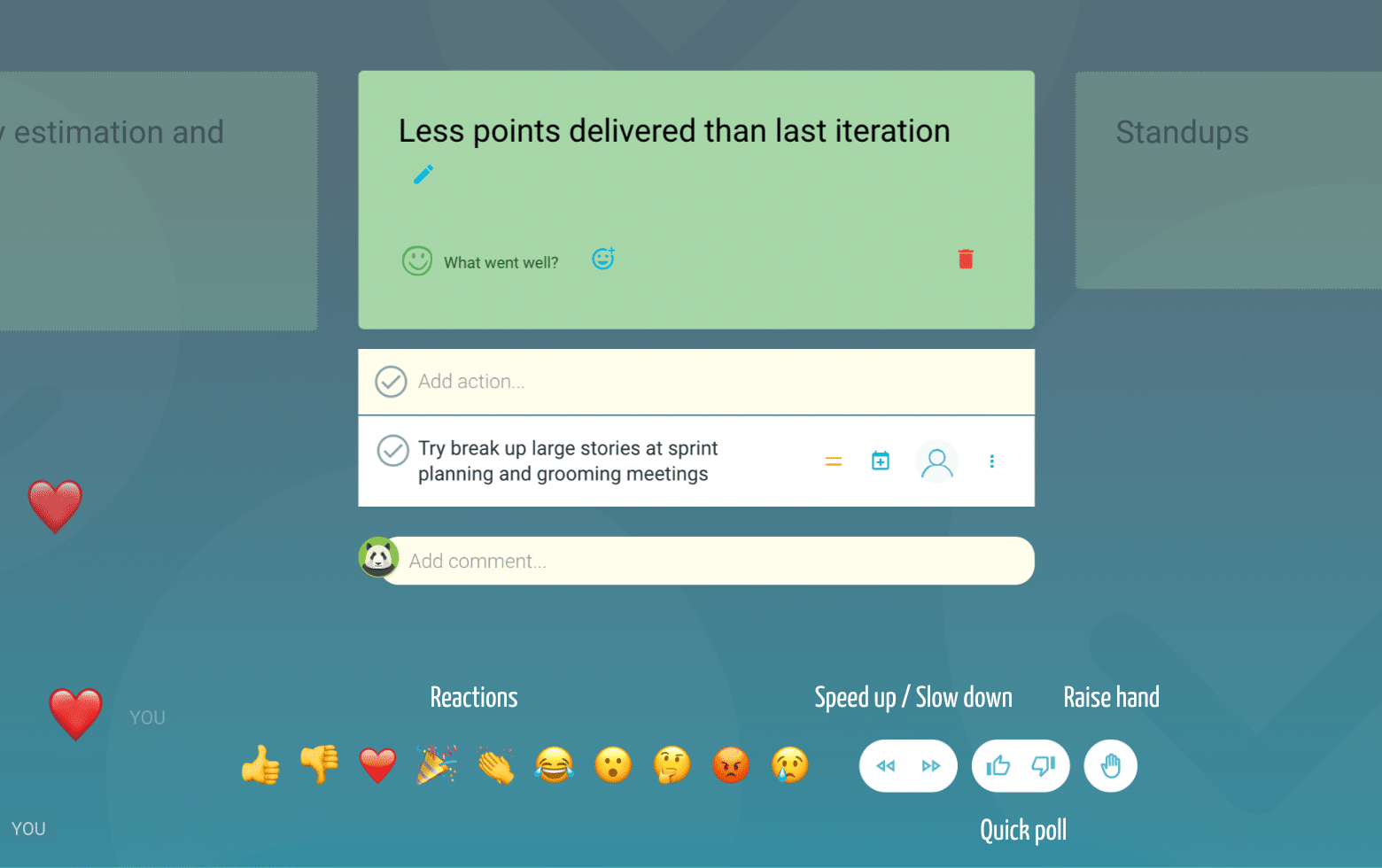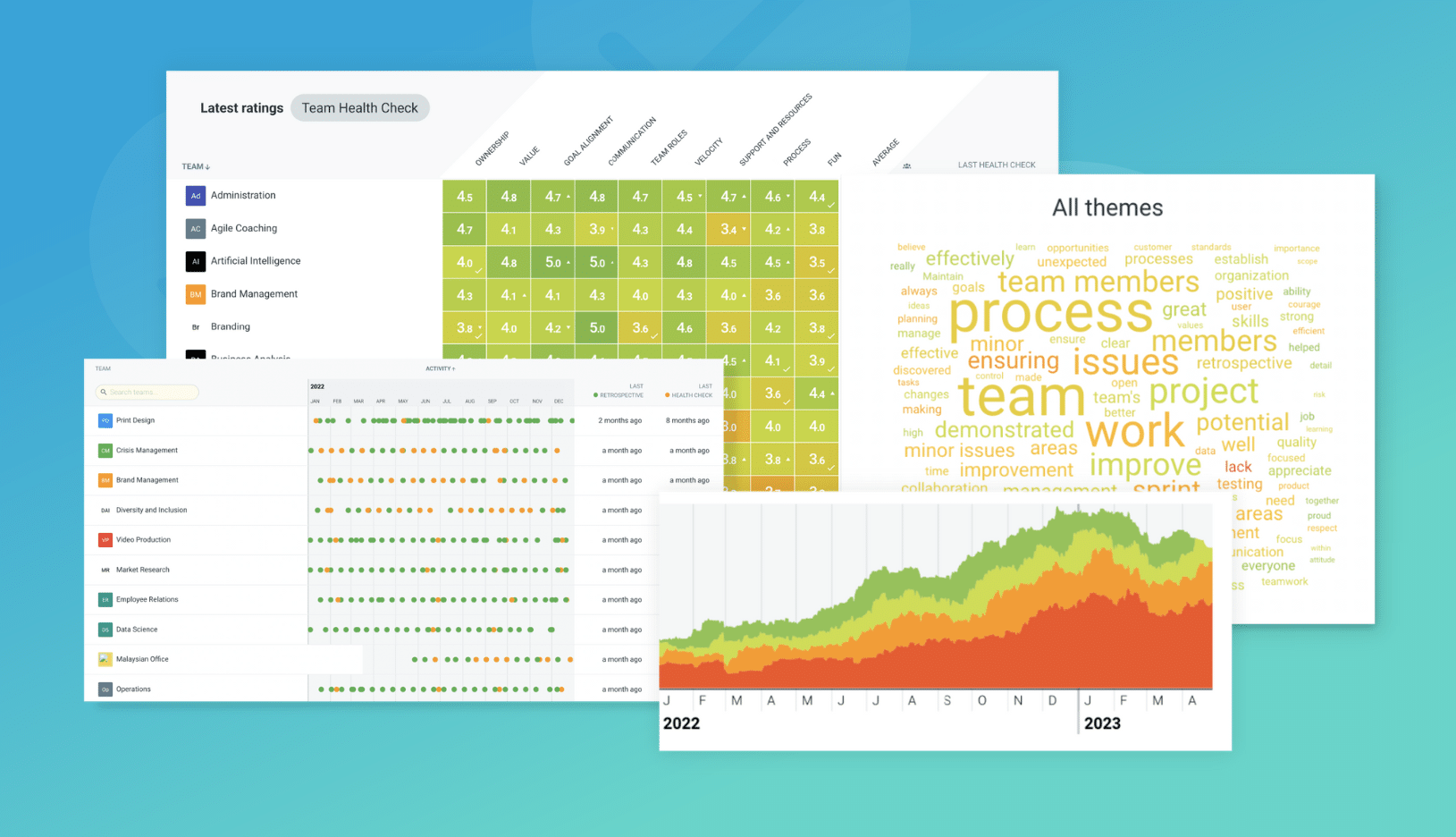What is the Must Should Could Won’t retrospective?
Our actions should express our priorities, and Must Should Could Won’t is a great sprint retrospective template to help teams identify those priorities to ensure they continue to deliver value where it is most needed.
With that in mind, it’s an approach that aligns well with agile processes and frameworks given its focus on the delivery of valuable things first. It is also a great Scrum sprint retrospective idea as it offers the product owner a mechanism to step into the shoes of their customer and view the product from their perspective.
The Must Should Could, Won’t template can also be used to run futurespectives with your team.
The Must Should Could Won’t template is incredibly powerful when used well. It is a particularly useful tool to maintain focus on priorities for projects with a large number of feature requests and competing stakeholders. It is also a great way to ensure any personal bias of the project team does not distort project priorities.
Must Should Could Won’t retrospective format
Must (M)
These elements are critical or core to delivery or release or are a requirement as needed by law or project delivery requirements.
Should (S)
These elements are important but not critical for the release nor are they time-sensitive. They may be requests that have come from users but are not show stoppers and can be seen as nice to have items – think low-cost value adds.
Could (C)
These would be great to have, but the release could be fulfilled without them. They may be future iteration ideas, potential growth or product differentiators, and something that could happen in the future.
Won’t (W)
These are elements that the team will not do and is specifically out of scope. For example, they may choose not to support an operating system, or that a product direction is specifically excluded.
Suggested icebreaker questions for Must Should Could Won’t retrospective
- How do you spend most of your time on the weekend?
- Which word resonates most with you – ‘should’ or ‘could’?
- How would you decide if an undertaking is something you must do?
Retro Rehearsal
Invite your team to rehearse the retro referencing a decision they make regularly.
For example, what item in your current shopping list must, should, could, or wouldn’t you buy?
Ideas and tips for your Must Should Could Won’t retrospectives
-
Looking for a way to disrupt groupthink or not let a good idea go to waste? Why not give an asynchronous Must Should Could Won’t a try! As well as offering your team a platform to focus on the project priorities, it allows team members space to contribute their own thoughts in their own time.
-
Seeking to support a psychologically safe space? Switch up your Must Should Could Won’t to allow participants to offer their input anonymously – all voices will be heard at the same volume and ideas rather than the person who suggested them will be the focus.
-
Clarify the team’s understanding of each header. The most commonly asked question is what the difference is between should and could. Should simply means that it might have be an agreed practice or potential future benefit if acted upon now. Could means that there is potential in the future and can be done.
-
The Must Should Could Won’t template can also be used at the start of a project in the form of a futurespective to help your team to shape a high-level strategy that supports the smooth delivery of their goal.
-
Use the way teams vote to manage priorities. This allows you to discuss key items and them move them into the relevant groups or columns as needed. Another way to manage priorities is to use team reactions and ask people to give each item a thumbs up or thumbs down for example to indicate their level of support for the items presented.
-
When reviewing the final list of items, there will be focus on action items around the Must column but don’t forget to come back to this list in future planning sessions. TeamRetro lets you keep all your history of your online retrospectives so you can find them as needed and review when the time is right.
How to run a Must Should Could Won’t retrospective in TeamRetro
Start Your Session in a Click
Log into TeamRetro and choose your template. Customise questions and the workflow to create your perfect retro for your team.
Create Your Team Easily – No Separate Accounts Needed
Brainstorm Individually – Free From Bias
Smart Grouping for Faster Insights
Fair, Flexible, and Fast Voting
Engage, React, and Capture Key Insights
Walk your team through ideas one by one with Presentation Mode. Stay in sync, spark real-time discussions, and capture feedback with comments, live reactions, and polls—all in one place.
Turn Ideas Into Action
Propose next steps with team buy-in, get AI-powered action suggestions, and keep everything in one place. Committed actions sync to your personal dashboard and integrate with your workflow tools—keeping you on track.
Save, Share, and Stay on Track
Get quick AI-powered summaries, add facilitator notes, and store retrospectives in your library for easy access. Schedule your next session and track published actions to keep your team accountable at the next retro.
Turn Team Data into Actionable Insights
Uncover trends, common themes, and key engagement metrics at a glance. Track sentiment shifts, analyze conversations, and monitor completed actions to drive continuous improvement.








